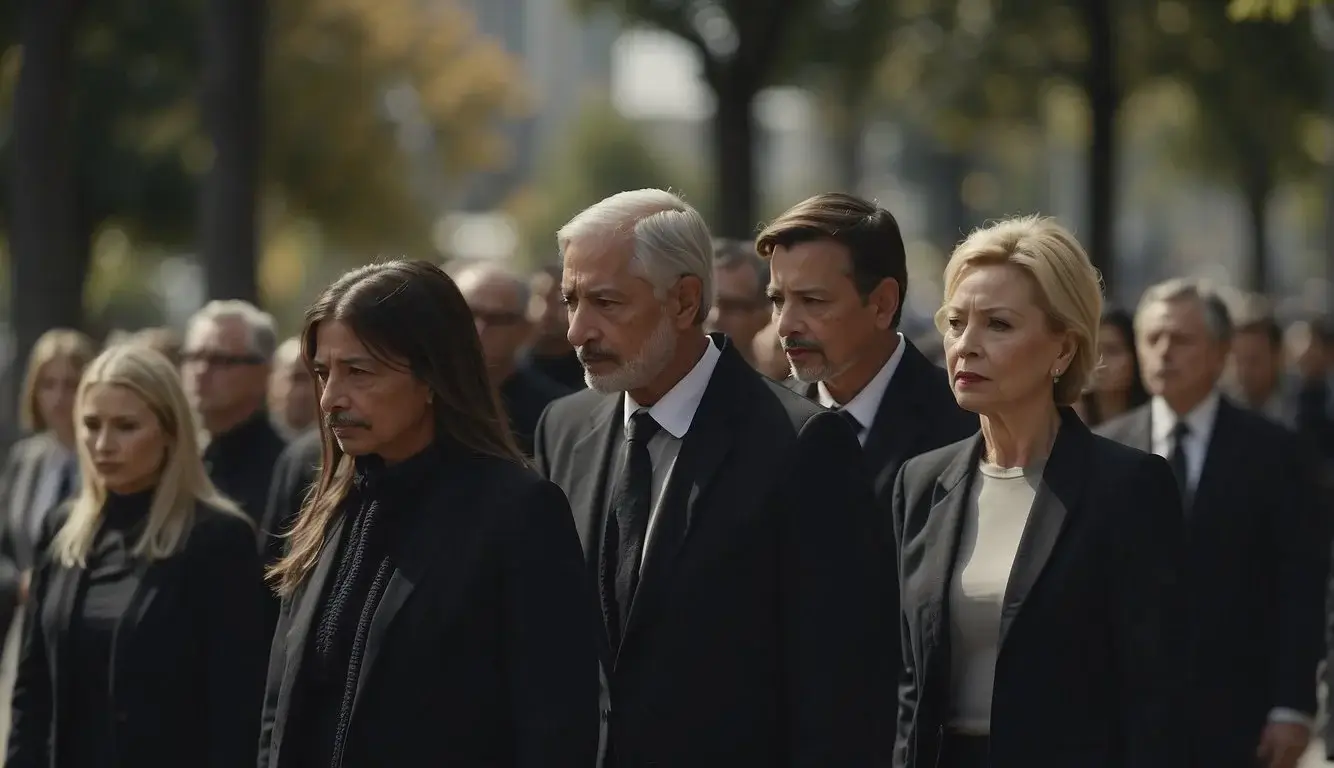After spending multiple hours in discussions and gathering knowledge from experts, I’ve crafted an in-depth guide on funeral procession etiquette that I’m really thrilled to share. This guide will skillfully instruct you on the appropriate ways to demonstrate respect and solemnity, regardless of whether you are part of or encounter a funeral procession.
Knowing the proper etiquette for a funeral procession is crucial, whether you’re a participant or a passerby. As a participant, it’s about following the director’s lead and the established protocol. As a bystander, it’s about showing respect, which often extends beyond courtesy into legal obligation. This guide will ensure you understand your role and responsibilities, helping maintain the dignity of the occasion.
- Being a part of a funeral procession demands adherence to provided instructions.
- Non-participants should yield and allow the procession to pass uninterrupted.
- Funeral processions are a deeply-rooted tradition respected by law and society.
Understanding Funeral Processions

When discussing funeral processions, it’s essential to consider the mix of history, legalities, and cultural practices that shape these solemn events. Each element, from the roles of participants to the route taken, has a specific significance and is guided by tradition and law.
Historical and Cultural Significance
Funeral processions have been vital to funeral traditions across various cultures and throughout history. They serve as a physical manifestation of grief and respect for the deceased. In many cultures, the procession is not just a transport from the funeral home to the final resting place but a public expression of loss and a rite of passage for the family.
Roles in the Procession
The funeral director often leads, arranging the procession and providing guidance to participants. Pallbearers have the honor of carrying the casket, while immediate family members follow closely behind. Other family and friends join in, their presence symbolizing community support.
Procession Order and Elements
The typical funeral procession order starts with the lead car, followed by the hearse carrying the casket. Limousines or private cars carrying the immediate family members come next. Each vehicle may display funeral flags to signify participation in the cortege.
The Route to the Final Resting Place
A funeral procession travels from the place of worship or funeral home to the cemetery or final resting place. The route chosen often holds personal significance to the deceased or their family, passing by important landmarks or significant places from the individual’s life.
Legal Aspects of Processions
The law typically requires other vehicles to yield the right-of-way to a funeral procession. Traffic laws may differ by location, but many areas require a permit for processions and dictate that all cars in the procession have their headlights on, even during daylight.
Modern Adaptations
Traditions continue to evolve, with COVID-19 prompting adaptations like Zoom funerals or drive-by processions. Regardless of form, the underlying purpose remains: to honor the grief and loss felt by the living and respect the deceased’s passage. Military funerals, for example, incorporate unique elements that align with their own revered traditions.
Attending a Funeral Procession

Attending a funeral service is an important way to offer respect and condolences to the mourning family. When participating in a funeral procession, it’s crucial to be mindful of specific etiquette surrounding preparation, attire, and behavior during the event.
Preparation and Arrival
I always arrive early to a funeral service to avoid any last-minute rushes. It’s respectful to check the procession route in advance and ensure my vehicle has enough fuel for the journey. I also confirm the details of the meetup location, often at a funeral home or the family’s residence.
Funeral Attire and Symbols
When planning my attire, I select somber colors and conservative dress as a sign of respect. I understand the significance of wearing a black suit or dress, and sometimes, the family may request that a specific symbol, like an armband or flag, be displayed on vehicles during the procession.
During the Procession
During the procession, I drive slowly, maintain a steady following distance, and keep my headlights and hazard lights on as a sign of participation. Staying together with the other funeral attendants is essential to avoid breaking the procession. I avoid any unnecessary honking unless it’s to ensure the safety of the procession.
Interacting with the Procession
When I encounter a funeral procession while driving, I yield the right of way. I stay patient and never cut through or disrupt the procession as a sign of courtesy toward the mourning friends and family.
Special Considerations for Mourners
As a mourner, I give myself space to experience grief. I stay close with other family and friends for support, and during the procession, we all make an effort to follow any special requests by the family, like participating in a final drive by the deceased’s home.
Post-Procession Etiquette
After reaching the cemetery, it is important to park courteously so all attendees can easily access gravesite services. After the burial, I stay for any post-service gatherings, like a wake, to share memories and offer further condolences.
Global Variations in Etiquette
I’m aware that customs can vary widely around the world. When attending funerals in different cultures, I educate myself on local traditions and funeral customs to ensure I show the highest level of respect for the grieving family and their heritage.
FAQ – Funeral Procession Etiquette
What should I do if I encounter a funeral procession while driving?
When you come across a funeral procession, it is customary and often legally required to yield. Do not cut through or interrupt the procession. Wait respectfully until all the vehicles have passed before proceeding.
Is there a specific speed I should maintain during the procession?
Yes, funeral processions typically move slower than regular traffic, often below the posted speed limit and generally not exceeding 55 mph on highways. It’s important to follow the lead vehicle’s pace without overtaking other cars in the procession.
How should I behave if I am a part of the funeral procession?
As a participant, you should follow the funeral director’s instructions, use your headlights and hazard lights if instructed, and maintain a close but safe distance to the vehicle in front of you to avoid gaps in the procession.
If you enjoyed reading about Funeral Procession Etiquette, check out our other articles:
- Bowling Etiquette 2024: Tips for Polite Play on the Lanes
- Surf Etiquette 2024: Key Rules for Sharing the Waves
- Tennis Etiquette 2024: Key Rules and Polite Play for Beginners
- Laundromat Etiquette 2024: Tips for a Harmonious Wash Day
Feel free to also check out our other Articles from the category “Etiquette & Manners“ and don’t forget to follow us on Pinterest.






